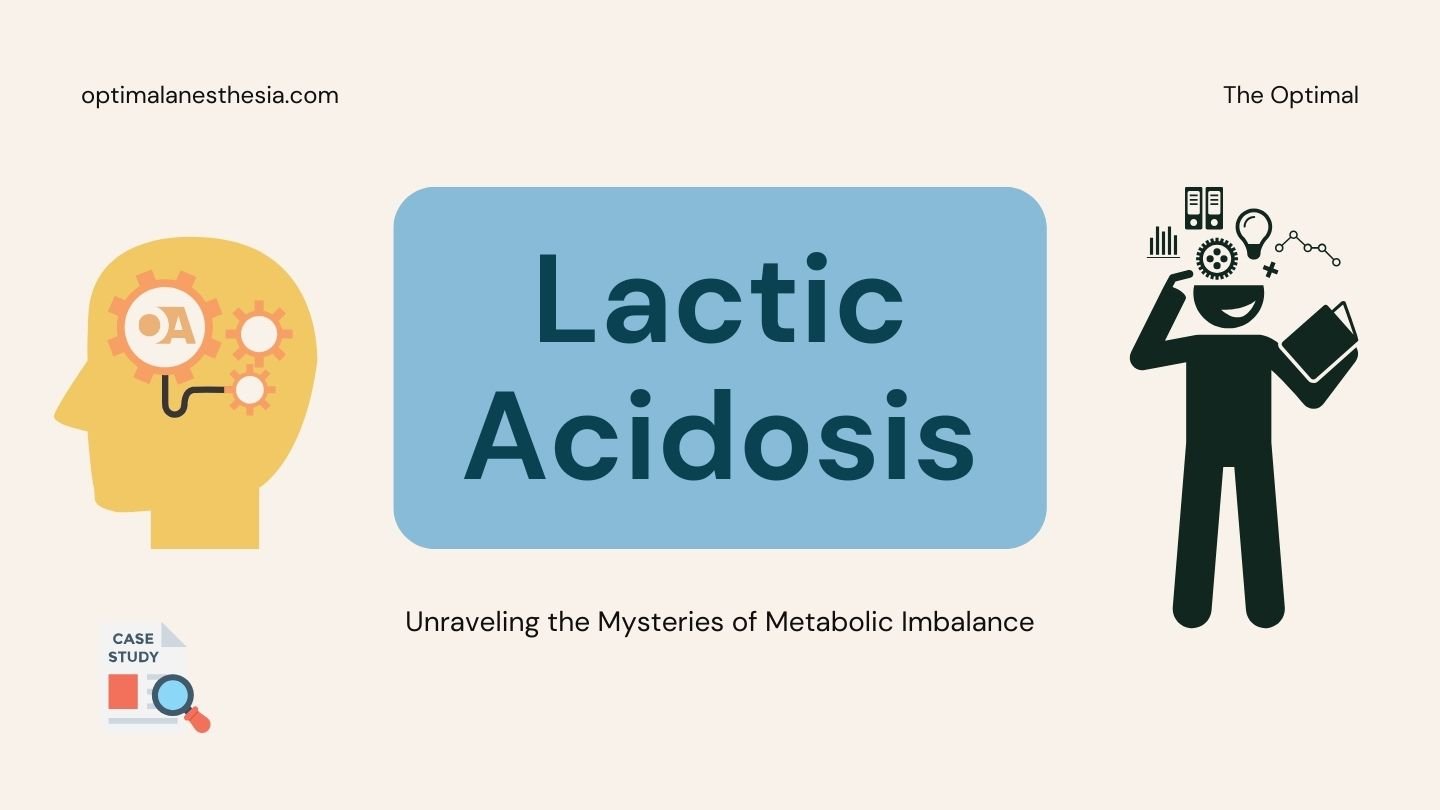Lactic acid is a key player in the body’s energy production and maintenance of acid-base balance. Understanding its biochemistry is crucial for medical professionals, especially anesthesia residents, as it is involved in various physiological processes and can be a marker of disease when dysregulated.
Why Lactic Acid is Important
Lactic acid is a byproduct of glucose metabolism and plays several critical roles in the body:
- Energy Production: It serves as an important energy source, particularly during times of high energy demand or when glucose availability is limited. Lactic acid is converted to pyruvate, which enters the citric acid cycle to produce ATP, the body’s primary energy currency.
- Glucose Generation: Lactic acid can be converted back to glucose in the liver, providing a pathway for glucose synthesis when needed. This process, known as gluconeogenesis, helps maintain blood glucose levels during fasting or prolonged exercise.
- pH Regulation: Lactic acid is involved in the body’s buffering system, helping to maintain the acid-base balance in tissues and blood. The production of lactic acid during intense exercise can temporarily lower pH, but this is usually quickly buffered by bicarbonate ions.
- Fuel for the Heart: The heart muscle can efficiently use lactate as a fuel source, especially during periods of increased energy demand, such as exercise or stress.
- Cell Signaling: Lactic acid has been shown to act as a signaling molecule, regulating various cellular processes, including gene expression, cell migration, and inflammation.
Normal Production and Utilization
- Normal Production: The body produces 15 to 20 mmol/kg/day of lactic acid as part of glucose metabolism. This process occurs via the glycolytic pathway and alanine deamination. The glycolytic pathway involves the conversion of glucose to pyruvate, which is then converted to lactate by lactate dehydrogenase (LDH). The equation for this reaction is:
Glucose + 2NAD+ ⇌ 2Pyruvate + 2NADH + 2H+,
Pyruvate + NADH + H+ ⇌ Lactate + NAD+. - Utilization and Balance: Lactic acid production is balanced by its utilization, ensuring a stable concentration in the body. The liver plays a significant role in converting lactic acid back to glucose through the Cori cycle. This cycle involves the conversion of lactate to pyruvate, then to glucose, which can be released into the bloodstream. The equation for this process is:
Lactate + NAD+ ⇌ Pyruvate + NADH + H+,
Pyruvate + ATP + GTP ⇌ Glucose + ADP + GDP + Pi.
Causes of Lactic Acidosis
Lactic acidosis can occur due to various factors, including:
- Increased Lactate Production: In conditions such as shock or sepsis, where tissue hypoperfusion and hypoxia lead to increased lactate production.
- Decreased Lactate Utilization: In conditions such as liver disease or certain medications that impair lactate metabolism.
- Impaired Buffering Mechanisms: When the body’s buffering capacity is overwhelmed, leading to a buildup of lactic acid.
Types of Lactic Acidosis
There are two main types of lactic acidosis:
- Type A Lactic Acidosis: Associated with tissue hypoperfusion and hypoxia, such as in shock or sepsis, leading to increased lactate production.
- Type B Lactic Acidosis: Caused by underlying medical conditions, such as liver disease, malignancy, or medications, leading to impaired lactate metabolism or increased production.
- D-Lactic Acidosis: Occurs in conditions such as short bowel syndrome or bacterial overgrowth in the intestines, where there is an accumulation of D-lactic acid.
Management of Lactic Acidosis
As an anesthesiologist managing lactic acidosis, it’s crucial to address the underlying cause while implementing appropriate pharmacological interventions. Here’s a detailed outline of the medical management, including doses per kilogram for pharmacological interventions:
1. Identifying and Treating the Underlying Cause:
- For Type A lactic acidosis, such as shock or severe infection, identify and treat the underlying cause promptly.
- For Type B lactic acidosis, focus on managing the underlying disease or discontinuing medications contributing to the acidosis.
2. Fluid Resuscitation:
- Administer balanced crystalloids for volume resuscitation.
- In hypovolemic shock, use isotonic crystalloids like lactated Ringer’s solution or normal saline.
3. Oxygen Therapy:
- Provide supplemental oxygen to correct hypoxemia and improve tissue oxygenation.
4. Vasopressors:
- Consider vasopressors to maintain adequate blood pressure and perfusion in distributive shock (e.g., septic shock).
5. Correcting Metabolic Acidosis:
- Use sodium bicarbonate in severe cases with significant metabolic acidosis (pH < 7.1). Dose: 1-2 mEq/kg IV bolus, then titrate to maintain pH > 7.15.
6. Monitoring and Supportive Care:
- Monitor vital signs, arterial blood gases, electrolytes, and lactate levels.
- Maintain hydration, electrolyte balance, and organ function.
7. Consideration of Renal Replacement Therapy (RRT):
- In severe cases with AKI or refractory metabolic acidosis, consider RRT to remove excess lactate and correct acid-base abnormalities.
8. Pharmacological Interventions:
- Dobutamine: Use in Type A lactic acidosis with impaired tissue perfusion. Dose: 2-20 µg/kg/min IV infusion.
- N-acetylcysteine (NAC): Has antioxidant properties and may improve mitochondrial function. Dose: 140 mg/kg loading dose, followed by 70 mg/kg every 4 hours for 17 doses.
- Methylene Blue: May reduce lactate levels. Dose: 1-2 mg/kg IV over 5 minutes, may repeat every 1-2 hours as needed.
9. Continuous Monitoring and Reevaluation:
- Continuously monitor clinical status, vital signs, laboratory values, and response to treatment.
- Reevaluate the underlying cause and adjust the treatment plan as needed.
Managing lactic acidosis in the perioperative setting requires a multidisciplinary approach, early recognition, and intervention to improve outcomes.


